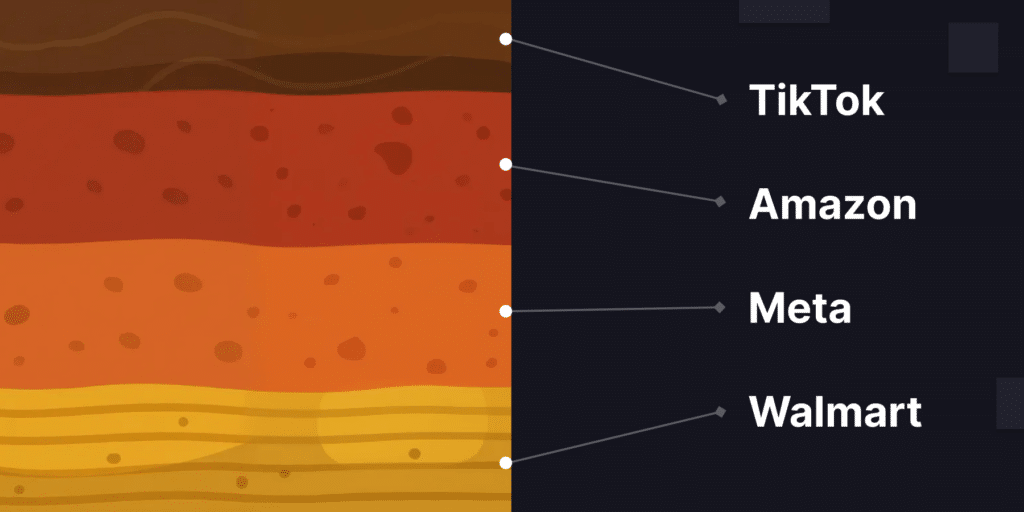What is the Amazon Retail Purchases data set? If you’re looking for the best ways to integrate Amazon Marketing Cloud into your operations, you aren’t alone.
We’re constantly encountering brands who feel behind the curve on AMC, and want to know how they can use AMC to make an immediate impact on their business.
One of the best methods is staring right in front of you: the Amazon Retail Purchase data set.
Essentially, the Amazon Retail Purchases data set gives 1P and 3P brands alike an impressive 5-year view of their Amazon purchase data.
The Amazon Retail Purchases data set offers an unprecedented look at your customer life-time value and your repeat purchase rate, so you can really know how much a new sale is worth to you.
It also allows marketers to tap an assortment of powerful new audiences.
Here are a few ways you might want to integrate the Amazon Retail Purchases data set into your business—and what to watch out for when you do.
What is the Amazon Retail Purchases data set?
Exclusively available in AMC, the Amazon Retail Purchases data gives you five years of purchase data at the ASIN level.
You can see every shopper who bought from you over this period, both organically and because of an ad.
This is a big deal, especially for 1P brands.
If you’re a 1P brand, you quite literally have no other way of seeing, say, your 5-year customer life-time value on Amazon like this.
Third-party sellers already have some of this data available to them in Seller Central, but the Amazon Retail Purchases data takes it further. Significantly, the data set also allows you to create audiences.
It’s important to keep in mind that the Amazon Retail Purchases data set solely includes information about purchases. There are no fields related to advertising impressions or clicks, to actions like add to cart, and so on.
Another nuance: The Amazon Retail Purchases data set is free for audience creation. But for query execution, you need to pay the subscription costs.
Why does the Amazon Retail Purchases data set matter?
There are a few use cases we love:
Unlock your full customer life-time value. CLTV is essential for measuring the long-term success of your ads.
So you converted a new shopper—what happens next? How much do they typically spend on your brand over time?
Knowing the typical life-time value of a customer tells you a lot about how much money is worth spending on ads upfront in order to convert them.
If your brand tends to have a really high long-term CLTV, then you might consider bidding up on your ads. If not, then you should rethink the strategy.
The beauty of this data set is you can customer life-time value across any amount of time you like.
Maybe you want to see the five-year life-time value.
Maybe you prefer the three years.
Or maybe you want to see how your life-time value changes over time—is there a point at which CLTV flatlines, and shoppers mostly stop re-purchasing?
Repeat purchase rate. Along similar lines, you can now easily track how often your shoppers repeat their purchase—as well as how frequently they do so over five years.
How many times does the typical new customer replenish your product?
What is the typical time gap between those purchases?
Or maybe you want to look specifically at shoppers who have gone cold. How often do shoppers buy from you again after dropping off for, say, two years?
Are those audiences even worth re-targeting?
You can also isolate repeat purchase audiences for ad targeting.
If a group of shoppers has repeated their purchase twice, maybe it’s time to run ads touting your subscription program to them.
Deals analysis. The Amazon Retail Purchases data set is one of the best ways to analyze how well your deals during major events, like Prime Day, perform in the long run.
What’s the long-term impact of a Black Friday or Prime Day purchase?
Do shoppers who buy from you at a discount simply seem to drop off after the first purchase? Or by advertising on Prime Day, are you successfully bringing valuable, loyal new shoppers into the fold?
This data set is one of the only ways to truly answer those questions.
Re-targeting. For brands that sell products with long re-purchase timelines, Amazon’s traditional data sets—with their limited lookback windows—have always posed problems.
If you know your typical re-purchase timeline is close to two years, for instance, having this 5-year data set lets you get a lot more specific about long-term re-targeting.
Because you now have long-term purchase data, you can also promote new deals or products to customers who have gone cold.
Create a segment of shoppers who should have re-purchased by now but haven’t, and maybe it’s worth pushing a deal or a new product on them.
What else is unique about the Amazon Retail Purchases report?
The Amazon Retail Purchases data contains a couple of unique categorizations that you can’t find anywhere else.
For instance, the ARP has columns that identify:
- Gifting behavior: The data set will identify which purchases were made as gifts.
- Business purchases: See whether an order was made as part of Amazon’s B2B site, Amazon Business.
- Purchase method: You can also see how the shopper made the purchase. For instance, “S” means they added it to a shopping cart before purchasing, “B” means they hit the “Buy Now” button to purchase, and “1” means they chose “1-Click Buy.”
And if you’re wondering how to leverage this data set, Intentwise Explore can help. Your 5-year purchase history, with customer life-time value over time, will soon be available as a responsive dashboard on our platform.




